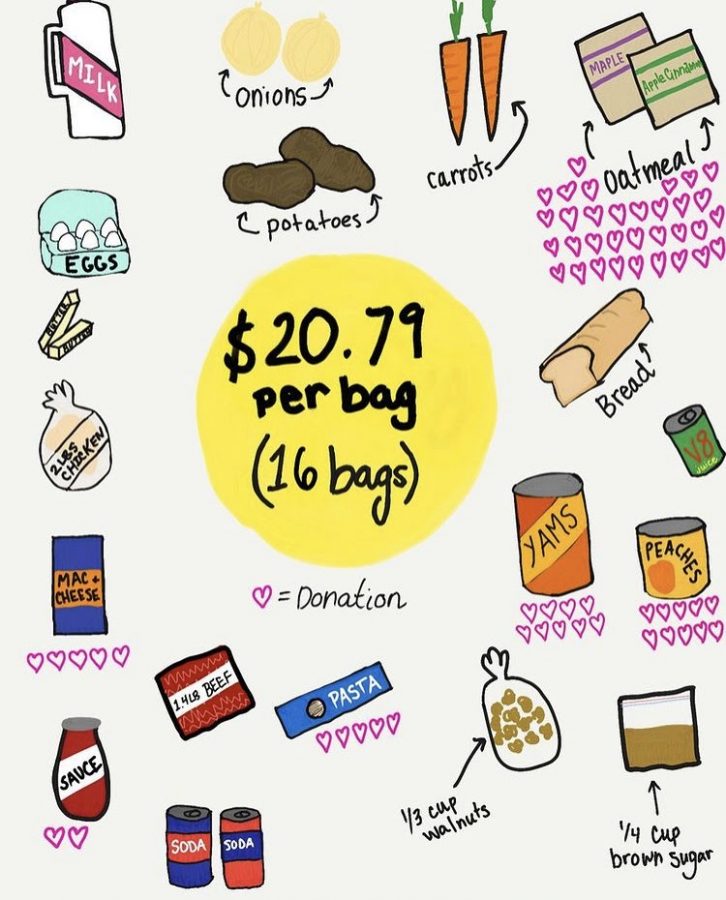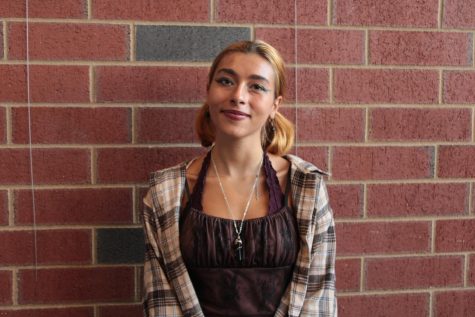What is Mutual Aid?
A post from @allegheniesaboltion Instagram page on Jan. 31, 2021, illustrating the effect of their Free Groceries program. All of the donations that were spent on these groceries came from the organization’s Solidarity Fund.
April 4, 2021
What do groceries, vaccines, unions, evictions, KN95 masks, and political education have in common? The answer is mutual aid. Like the name suggests, mutual aid is a form of community support that is mutually beneficial to parties involved. Unlike traditional charity, mutual aid is meant to be much more personal and specific to the recipient. Mutual aid sets itself apart from other forms of charity through politicization, as social justice and anti-capitalism are at the heart of its aims. Thanks to social media, mutual aid can take place all over the world. In fact, it’s happening right here, in State College, PA.
In the past year, COVID-19 has necessitated the need for mutual aid work. With record-low unemployment numbers last spring and the threat of medical bills at a high, the year has been especially difficult for those already struggling to get by. In May of 2020, Centre County residents were moved to create a community organization by the name of Alleghenies Abolition along with an Instagram page (@allegheniesabolition).
“Our objective is to build autonomous or dual power among working-class and oppressed people,” the organization stated on their page. “We initiate and develop self-directed programs that provide working-class and oppressed people the power to care for each other and defend themselves against those that would exploit and target them.”
This premise can be applied to mutual aid in general. Focusing on historically oppressed groups is necessary for the work that is done. That means that Black, disabled, trans, neurodivergent, and other marginalized people take priority. This is not because they are more important than others in need, but because they are more vulnerable.
Statistically, having any one of these identities makes support from the government or social services less likely. According to a study conducted by the National Center for Biotechnology Information (NCBI), Black people in search of housing are shown fewer units, told about fewer available houses, are less likely to have phone calls returned, and face poorer treatment from landlords than white people. According to the Bureau of Labor Statistics, less than one in five people with disabilities (19.2%) are in the labor force as of 2019. According to the National Center for Transgender Equality, one in five transgender individuals have experienced homelessness in their lives. These disparities explain the specific focus on marginalized groups. Although every single person in need deserves support, not every single person starts on the same playing field.
With these inequities taken into account, the “structure” that mutual aid takes begins to make more sense. The way racism, ableism, homophobia, xenophobia, transphobia, and more affects poverty is intrinsically connected to the economic system people live within today, which is capitalism. In contrast to traditional charity and government relief, mutual aid doesn’t entail means testing, cuts to services, or excuses from politicians they will never meet. It exists to combat the gaping holes in the systems that exist today and be there those who fall through the cracks (there are a lot). Therefore, it is not only anti-capitalism, it is also anti-imperialism, anti-white supremacy, and generally for social justice.
“It is ‘Indigenous lifeways and sovereignty; it is Black thrivance and power.’ It is a practice that most people of color have been following for a long time, and predates colonialism and capitalism,” stated Mutual Aid NYC.
Delta junior Mayegun Ireolubowa is a member of the 3/20 Youth Coalition in State College, a branch off of the 3/20 Coalition. He believes that mutual aid is a fundamental component in the strive to create a safe community for all, including both minority and majority groups.
“It is a way of bonding the community together, and as the saying goes, sticks in a bundle are unbreakable,” Ireolubowa said.
Mutual aid work can be as simple as signing up to buy groceries for your neighbor one day or distributing masks around town. It’s organizing to defend fellow tenants against evictions by landlords. It’s donating to a GoFundMe for your coworker’s medical bill. Most importantly, mutual aid is done for the community, by the community.



josh b. • Apr 7, 2021 at 10:01 AM
this is good